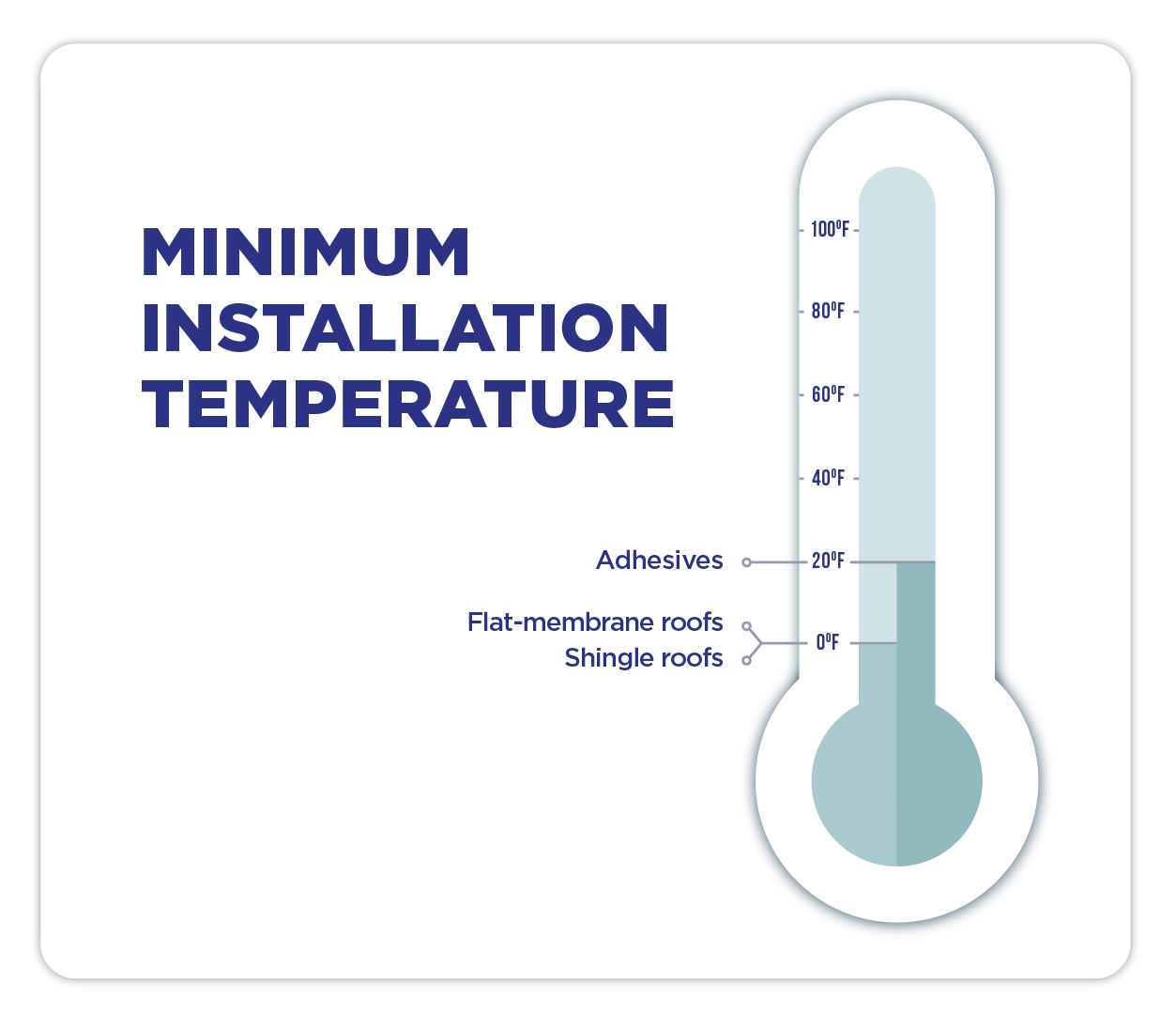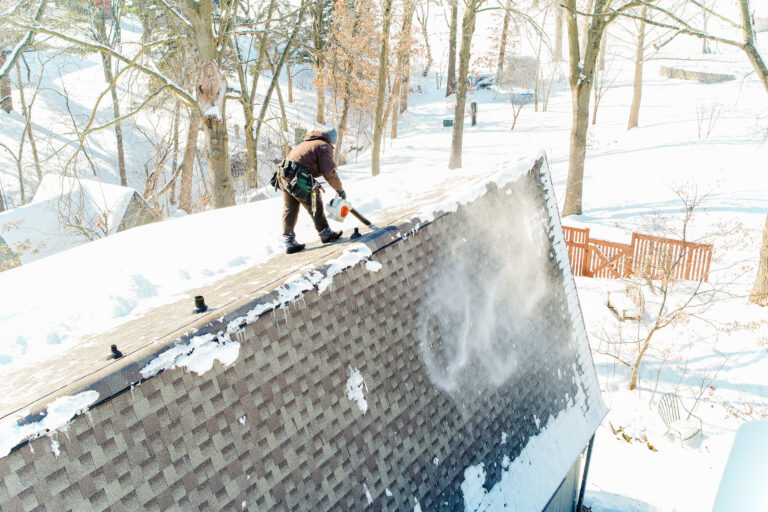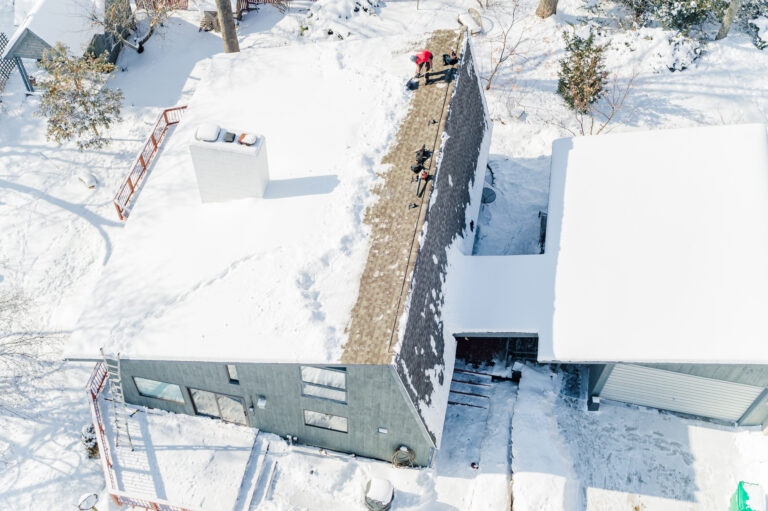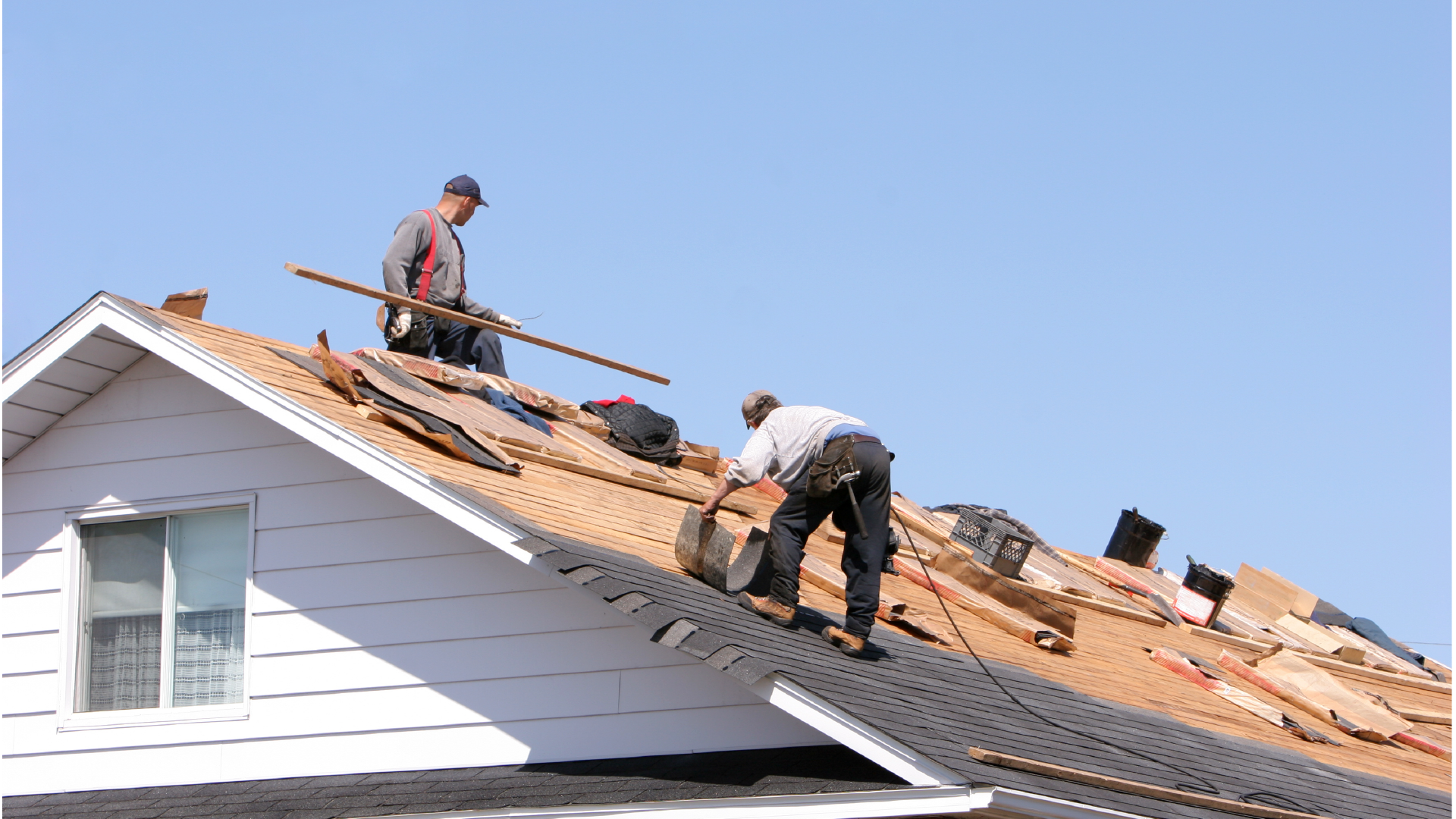At Hopkins, we roof year-round. However, there’s a reason the warmer months are considered the busy season.
Warmer climates and temperatures are ideal for not only the roofing materials but also the roofing contractors, who can work more efficiently and safely. Warmer temperatures are better for materials because there are some limitations for cold-weather roofing applications.
There are certain products, however, that handle colder temperatures better than others, so it may depend on what kind of product you want to use.
How cold temperatures affect shingles
Have you seen many roofing companies in your neighborhood during the winter months? That is because when it comes to applying shingles to your home or business, warmer weather is ideal. But winter roof installation is still doable—it just comes down to the type of shingle you use since some do not work as well in cold temperatures.
SBS Modified asphalt shingles, such as the CertainTeed Northgate, will lay flat down to zero degrees Fahrenheit and are better for low temps because they are more flexible and won’t damage as easily from the wind. If they were to curl up due to a windstorm before properly sealing, they would lay flat again because they are able to bend without creasing/breaking.

No matter what shingle you use, sealant will not seal in colder temperatures and requires consistently warmer temperatures to adhere correctly. To make sure shingles are installed the right way and won’t blow off, it is important that they are nailed properly, meaning the appropriate amount of nails are used in each shingle and that nails are placed correctly on the nail strip.
Until the shingles are able to seal in warmer temperatures, they will all be attached individually. But once they seal, they will be more uniform and act as one system. It is also worth noting that all roofing materials will have at least a small amount of expansion and contraction when it comes to temperature swings.
After your roof is replaced in the winter, many shingles will look like they are sticking up and not adhering down to the shingle below it. It will take consistently warm temperatures for the shingles to become malleable and for the sealant to stick to the shingle below it to finally lay flat. Know that the shingle is still fastened to the house by the nails, and it may just take longer to flatten.
If you can wait to replace your roof and don’t want to spend extra on the SBS shingles, waiting until spring may be a better option for you. But if you do need to replace your roof as soon as possible, we recommend the SBS modified shingles to decrease the chances of damage before sealing.
How cold temperatures affect flat roofs
Does your business have a flat roof? Have you experienced damage to your roof? Is it time for a roof repair? Whether you should replace it this winter comes down to the system being used.
For fully adhered systems, we recommend waiting until spring. For mechanically fastened systems, induction welding systems, or metal roofing systems, less adhesives are involved in the fastening, so these can be installed in the winter.
Colder temperatures can cause adhesives to have a much longer cure time and can cause caulking and sealants to become cold and harder to use. Adhesives take less time to “cure” during warmer weather. When it’s colder, the cure time is longer and if it is not handled properly, this can lead to poor installation quality.
As a general rule of thumb, most adhesives perform best in 40-degree conditions. However, there are some products that are designed for cold weather application and will perform well in 20-degree weather.
Is it time to replace the roof of your business? Learn more about replacing a commercial roof in winter as temperatures dip.
For flat-membrane roofs, where the materials are stored prior to installation is also important. Ideally, all the materials would be stored in a warm environment prior to installation. To help avoid some cold weather application problems, accessory materials can even be stored in a warming box.
No matter the time of year, materials need to be properly cared for overnight by placing a breathable cover over them so air can flow, which helps reduce moisture and keep it dry from the elements—whether it’s raining or snowing.
Does it take longer to replace a roof in the winter?
Generally, a roof replacement project will take slightly longer in the winter—and weather conditions are just one factor to consider. For a home shingle project, installation could take a couple more days, while for commercial flat-roof projects, colder weather could add a few more weeks. Shingle replacements usually only take one to three days, however, so if you have a few 40-degree days in a row, there may be no delays.
The ease with which the product can be worked or fashioned is also a big factor and will decrease the colder it gets. Another factor is the mobility of the crews—it can be more difficult for them to move quickly when they are bundled up in winter gear. Plus, frost on shingle roofs will prevent roofers from getting on the roof for the first hour or two of the day.
Other factors related to cold that extend projects are:
- More time spent on adhesive/welding details.
- Potential time clearing out snow and ice.
- Making sure materials are stored in proper environments.
- Less daylight.


Perks to getting your roof replaced in the winter
Did you know that there are benefits to replacing your roof in the winter? For example, if you are looking to get the roof on your house replaced immediately or on short notice, there is a much better chance of that happening in the winter since it is not a popular season. Since it is not the busiest time, there are not as many customers waiting in line. The only scheduling difficulty is the weather, which we know is very inconsistent in the Midwest.
Get help deciding when to replace your roof
If you’re unsure whether you should replace your roof now or wait, call experienced roofing contractor Hopkins Roofing to get on the schedule and receive a free estimate. Plus, we will be able to give advice and recommendations for your situation.



